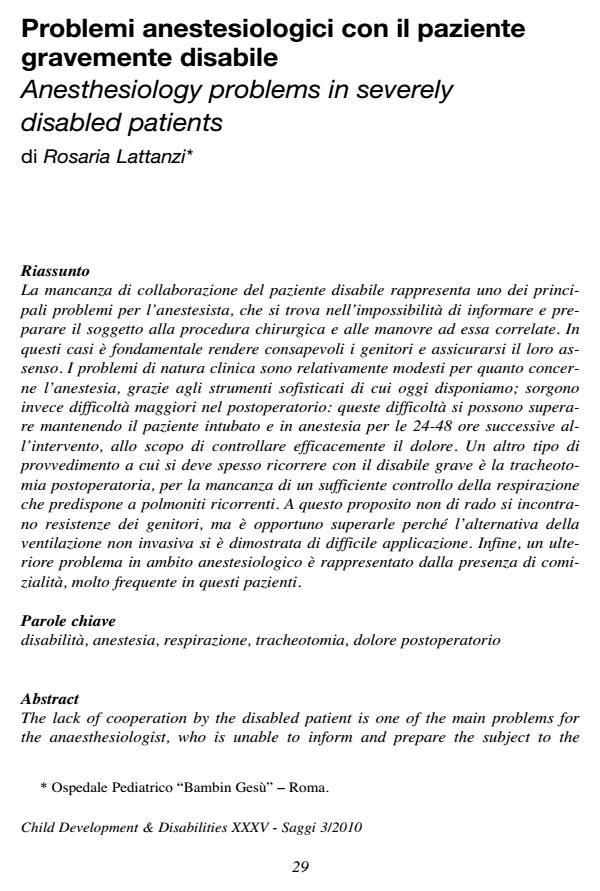Problemi anestesiologici con il paziente gravemente disabile
Titolo Rivista CHILD DEVELOPMENT & DISABILITIES - SAGGI
Autori/Curatori Rosaria Lattanzi
Anno di pubblicazione 2012 Fascicolo 2010/3
Lingua Italiano Numero pagine 4 P. 29-32 Dimensione file 50 KB
DOI 10.3280/CDD2010-003005
Il DOI è il codice a barre della proprietà intellettuale: per saperne di più
clicca qui
Qui sotto puoi vedere in anteprima la prima pagina di questo articolo.
Se questo articolo ti interessa, lo puoi acquistare (e scaricare in formato pdf) seguendo le facili indicazioni per acquistare il download credit. Acquista Download Credits per scaricare questo Articolo in formato PDF

FrancoAngeli è membro della Publishers International Linking Association, Inc (PILA)associazione indipendente e non profit per facilitare (attraverso i servizi tecnologici implementati da CrossRef.org) l’accesso degli studiosi ai contenuti digitali nelle pubblicazioni professionali e scientifiche
La mancanza di collaborazione del paziente disabile rappresenta uno dei principali problemi per l’anestesista, che si trova nell’impossibilità di informare e preparare il soggetto alla procedura chirurgica e alle manovre ad essa correlate. In questi casi è fondamentale rendere consapevoli i genitori e assicurarsi il loro assenso. I problemi di natura clinica sono relativamente modesti per quanto concerne l’anestesia, grazie agli strumenti sofisticati di cui oggi disponiamo; sorgono invece difficoltà maggiori nel postoperatorio: queste difficoltà si possono superare mantenendo il paziente intubato e in anestesia per le 24-48 ore successive all’intervento, allo scopo di controllare efficacemente il dolore. Un altro tipo di provvedimento a cui si deve spesso ricorrere con il disabile grave è la tracheotomia postoperatoria, per la mancanza di un sufficiente controllo della respirazione che predispone a polmoniti ricorrenti. A questo proposito non di rado si incontrano resistenze dei genitori, ma è opportuno superarle perché l’alternativa della ventilazione non invasiva si è dimostrata di difficile applicazione. Infine, un ulteriore problema in ambito anestesiologico è rappresentato dalla presenza di comizialità, molto frequente in questi pazienti.
Parole chiave:Disabilità, anestesia, respirazione, tracheotomia, dolore postoperatorio
Rosaria Lattanzi, Problemi anestesiologici con il paziente gravemente disabile in "CHILD DEVELOPMENT & DISABILITIES - SAGGI" 3/2010, pp 29-32, DOI: 10.3280/CDD2010-003005